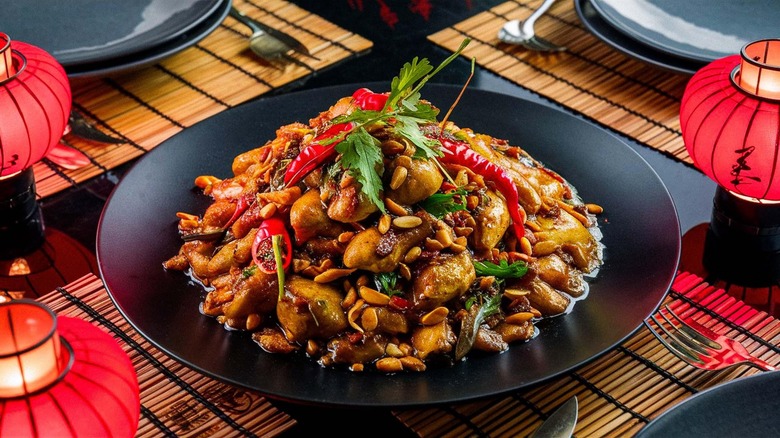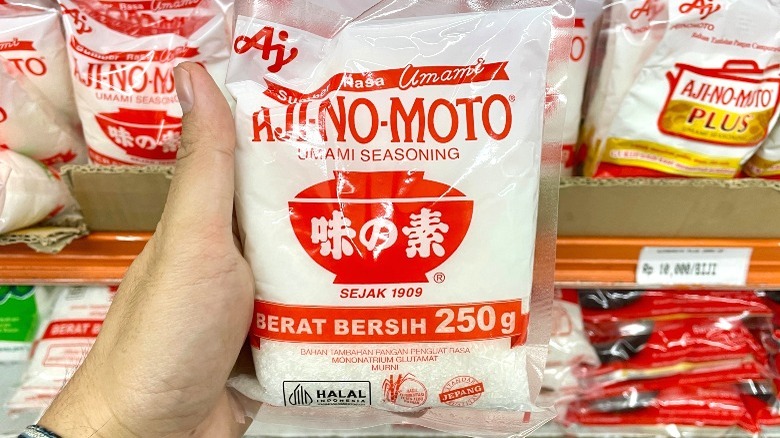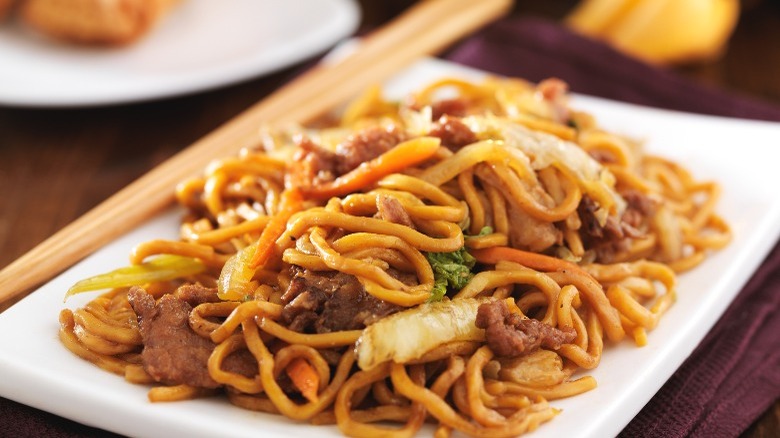The Most Important Ingredient For Making Takeout-Style Chinese Food At Home
Being a home cook can be both terrifically liberating and horrendously frustrating. You can make all sorts of delicious dishes in the comfort of your own kitchen, you can nourish your family night after night, you can earn the admiration of your friends, and the thinly-veiled jealousy of your enemies. However, you can never quite make your food taste the way it does at your favorite restaurants. Unless you have access to their pricey equipment, or you managed to pry their recipes out of their cold, dead hands, your food, no matter how tasty, will taste just a little bit different.
But if you're rending your shirt in despair at the futility of making takeout-style sesame chicken (for example), don't worry so much about it. There's an ingredient, one that's commonly available but rarely found in home kitchens, that will get you almost all the way there. Its name is monosodium glutamate, but you can just call it MSG for short.
No, MSG isn't dangerous
Wait a minute, hold the phone! Isn't MSG that terribly unhealthy additive everyone warns you about, responsible for everything from obesity to general malaise? Don't you see a bunch of products for sale at the supermarket which specifically sell themselves as MSG-free? Why on earth would an upstanding food resource like ourselves tell our audience to ingest such a horrible thing? What kind of sickos are we?
MSG has a bad reputation, but in truth, it's no more dangerous than salt. In fact, it contains just a third of the sodium as table salt. A letter written to the New England Journal of Medicine by one Robert Ho Man Kwok coined the term "Chinese restaurant syndrome" to describe getting sick after eating Chinese, and, after a few other possibilities, pointed the finger at MSG. A stigma soon developed, one that quickly sublimated mid-century America's latent xenophobia into an appropriately ominous-seeming cause célèbre. Even now that foreign cuisine has become thoroughly integrated into our food culture, the stigma has lingered, and that's a real shame.
MSG is an amazing umami booster
While MSG is found in natural sources like tomatoes and certain kinds of cheese, it's also used as an additive in foods like potato chips, soy sauce, and, yes, Chinese food. MSG makes your mouth produce more saliva, which produces that unctuous, mouth-watering flavor you associate with your favorite General Tso's chicken or beef lo mein. When someone makes Chinese food at home and complains that it doesn't taste the way takeout does, nine times out of 10, MSG is what they're missing.
MSG is an outstanding umami booster in general — put some into a pot of soup sometime, or over your scrambled eggs — but it is the key to making takeout-style Chinese recipes. Whether you're trying your hand at making char siu pork at home, or you're whipping up some orange chicken, a few generous sprinkles of MSG is so crucial for homemade Chinese food.


